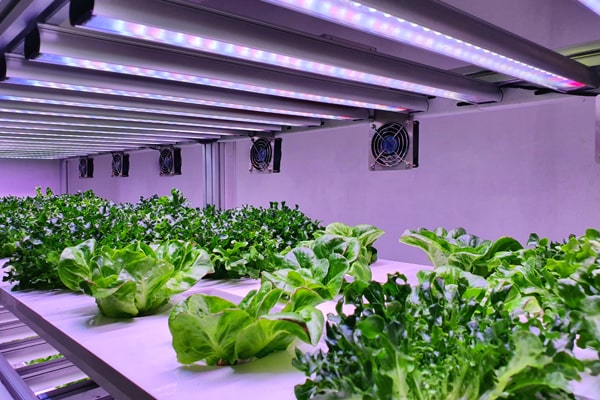In recent years, we have witnessed a considerable surge in the demand for sustainable and efficient agricultural practices. One such innovation that has emerged as a game-changer is hydroponics, a soilless gardening technique that uses a nutrient-rich water solution to grow plants. Hydroponics is revolutionizing agriculture by offering numerous benefits, such as increased yield, reduced water consumption, and space optimization. In this article, we will explore the world of hydroponic gardening and its transformative potential.
Contents []
In recent years, we have witnessed a considerable surge in the demand for sustainable and efficient agricultural practices. One such innovation that has emerged as a game-changer is hydroponics, a soilless gardening technique that uses a nutrient-rich water solution to grow plants. Hydroponics is revolutionizing agriculture by offering numerous benefits, such as increased yield, reduced water consumption, and space optimization. In this article, we will explore the world of hydroponic gardening and its transformative potential.
Hydroponics: A Brief Overview

Hydroponics is a method of growing plants without the need for soil, using mineral nutrient solutions in a water solvent. The term "hydroponics" is derived from two Greek words: "hydro," meaning water, and "ponos," meaning labor. This soilless cultivation technique provides plants with the essential nutrients directly, enabling them to grow faster and produce higher yields compared to traditional soil-based methods. So, what is hydroponics garden about?
Various Hydroponic Systems

There are several hydroponic systems, each with its unique advantages and applications. The most common systems include:
- Nutrient Film Technique (NFT): A thin layer of nutrient-rich water continuously flows over the roots of plants suspended in a sloping trough. NFT is ideal for growing small, fast-growing plants like lettuce and herbs.
- Aeroponics: Plants are suspended in air, and their roots are periodically misted with nutrient-rich water. This system provides plants with ample oxygen, promoting rapid growth and high yields.
- Deep Water Culture (DWC): Plants are suspended in a floating raft, with their roots submerged in a nutrient-rich water reservoir. DWC is suitable for growing a wide variety of plants, including leafy greens, tomatoes, and peppers.
- Ebb and Flow (Flood and Drain): This system periodically floods the plant roots with nutrient-rich water and then drains it away, allowing the roots to breathe. It's a versatile system that can accommodate various plant types and sizes.
The Benefits of Hydroponic Gardening

Hydroponic gardening offers several advantages over traditional soil-based methods:
- Water Efficiency: Hydroponics uses up to 90% less water than conventional agriculture, making it an eco-friendly alternative in water-scarce regions.
- Space Optimization: Hydroponic systems can be stacked vertically, allowing for more efficient use of space, especially in urban environments where land is limited.
- Faster Growth and Higher Yields: Hydroponically grown plants typically mature faster and produce higher yields due to the direct delivery of nutrients to their roots.
- Reduced Pesticide Use: Hydroponic gardens are less prone to pests and diseases, reducing the need for harmful chemical pesticides.
- Year-round Production: Indoor hydroponic systems can provide fresh produce throughout the year, regardless of external weather conditions.
Conclusion
Hydroponics is a game-changing innovation in agriculture, offering a sustainable and efficient alternative to traditional farming practices. With its numerous benefits, such as water efficiency, space optimization, and increased yields, hydroponic gardening is set to revolutionize the way we grow our food. As the world grapples with challenges like climate change, population growth, and pollution, such efficiency is very important.



